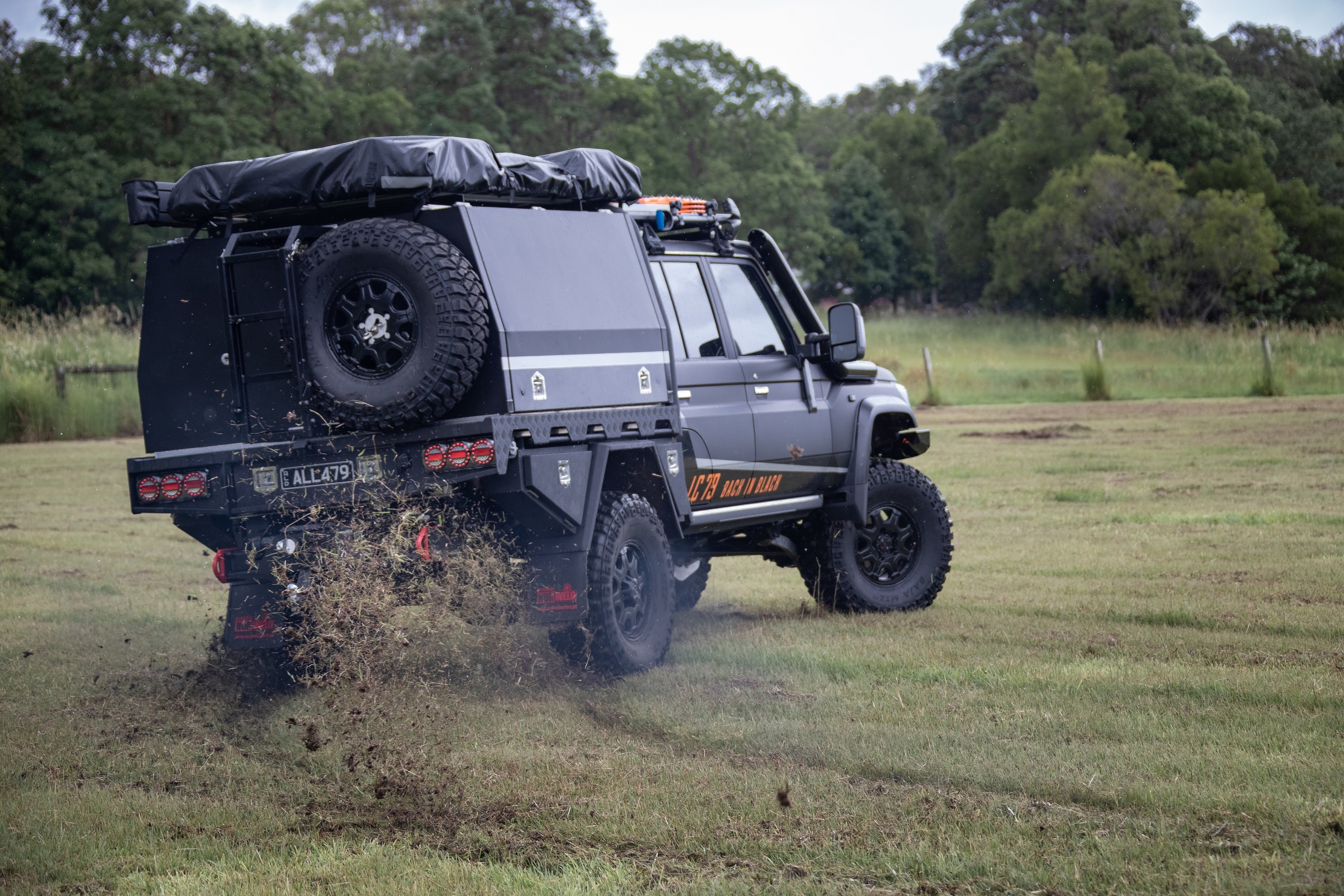In days gone-by, the humble dual cab ute was primarily used by tradies and farmers because of their ruggedness and ability to carry passengers as well as tools or equipment. However, in recent years the product and market has changed, and the dual cab has become the vehicle style of choice for recreation and 4WDing, drivers with towing requirements, and now even city slickers are onboard.
The rise of the dual cab can be put down to a few things such as their size and flexibility, but also the safety and luxury features that were previously only available in large SUVs. With an endless list of potential accessories and modifications available, it can be a daunting process when looking to pimp out your new dual cab 4x4, and there are some mods that should have a higher priority than others. If you want more freedom away from the city limits, one of the first areas which you should look to improve is the vehicle’s electrical setup.
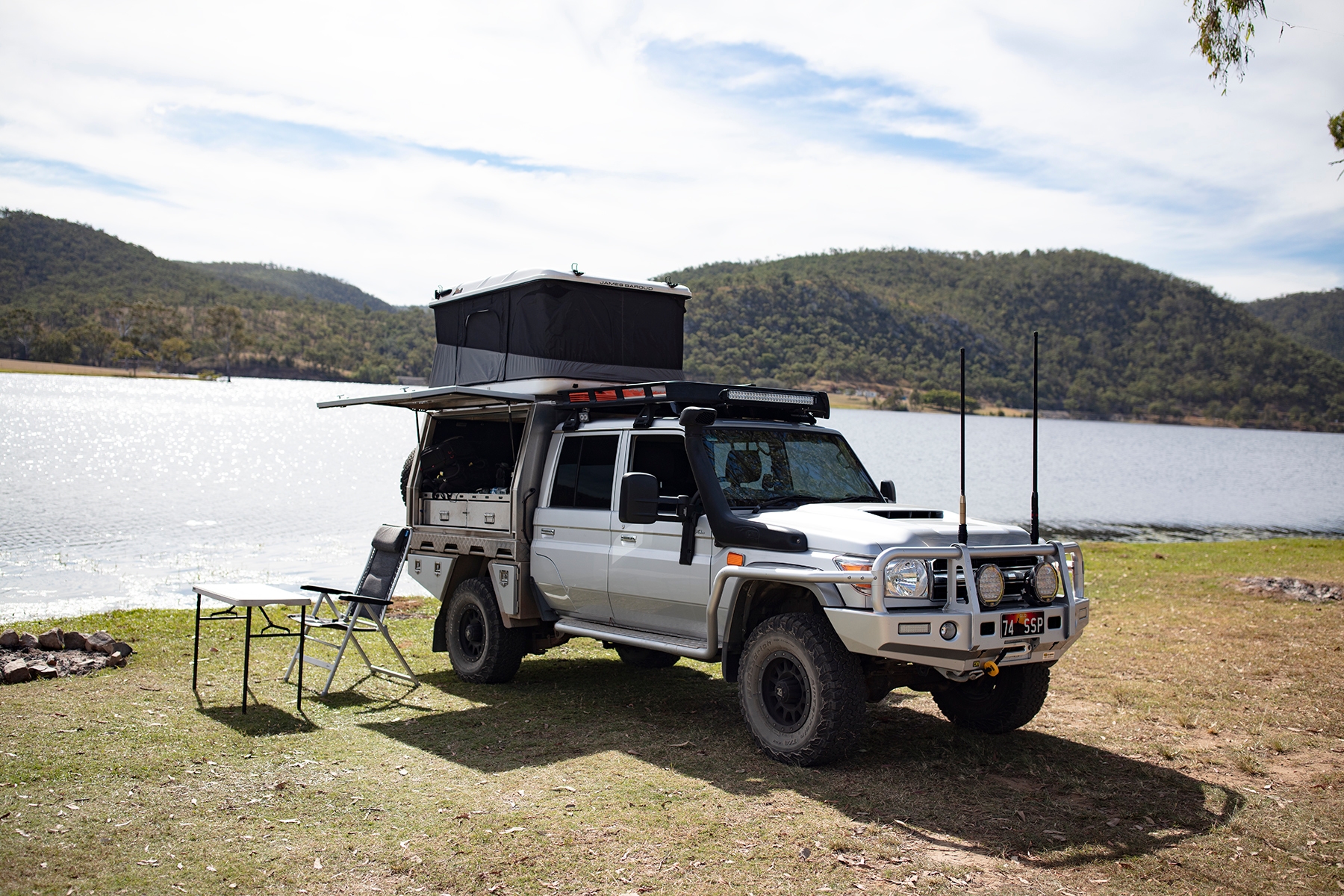

Understanding alternators
The alternator is the power supply used by the vehicle to recover its start battery from the engine starting process and provide power to its electrical components once running. There are two common types of alternators, the traditional fixed-voltage alternator, and the now more common smart alternator.
The fixed voltage alternator produces sufficient voltage to successfully charge a secondary battery, whereas a smart alternator adjusts its output voltage based on the vehicle operating conditions to reduce the electrical load, and in turn, the mechanical load on the engine from the alternator. This renders it unsuccessful at charging a secondary battery to a usable level.
Widespread implementation of smart alternators means that the once trusty process of parallel charging from the start battery to the secondary battery is not effective in vehicles equipped with this technology. This is because, for all the things a smart alternator knows, it does not consider the secondary battery’s state of charge, type, or location in the vehicle.
Battery blues
Most dual cab utes are built with just one starting battery so installing a second battery for auxiliary purposes is required to increase capacity and allow loads to be run when the vehicle is off. This can be a tricky process in a dual cab and really depends on your vehicle. In years past, an under the bonnet install was a common occurrence, but not anymore, due to a lack of space and higher levels of heat being generated from the engine.
The fact is that the best location for the install of secondary battery depends on your ute. Some utes lend themselves to a secondary battery being installed behind the rear passenger seat or under the tray, others tend towards an install inside the tub or on the tray.
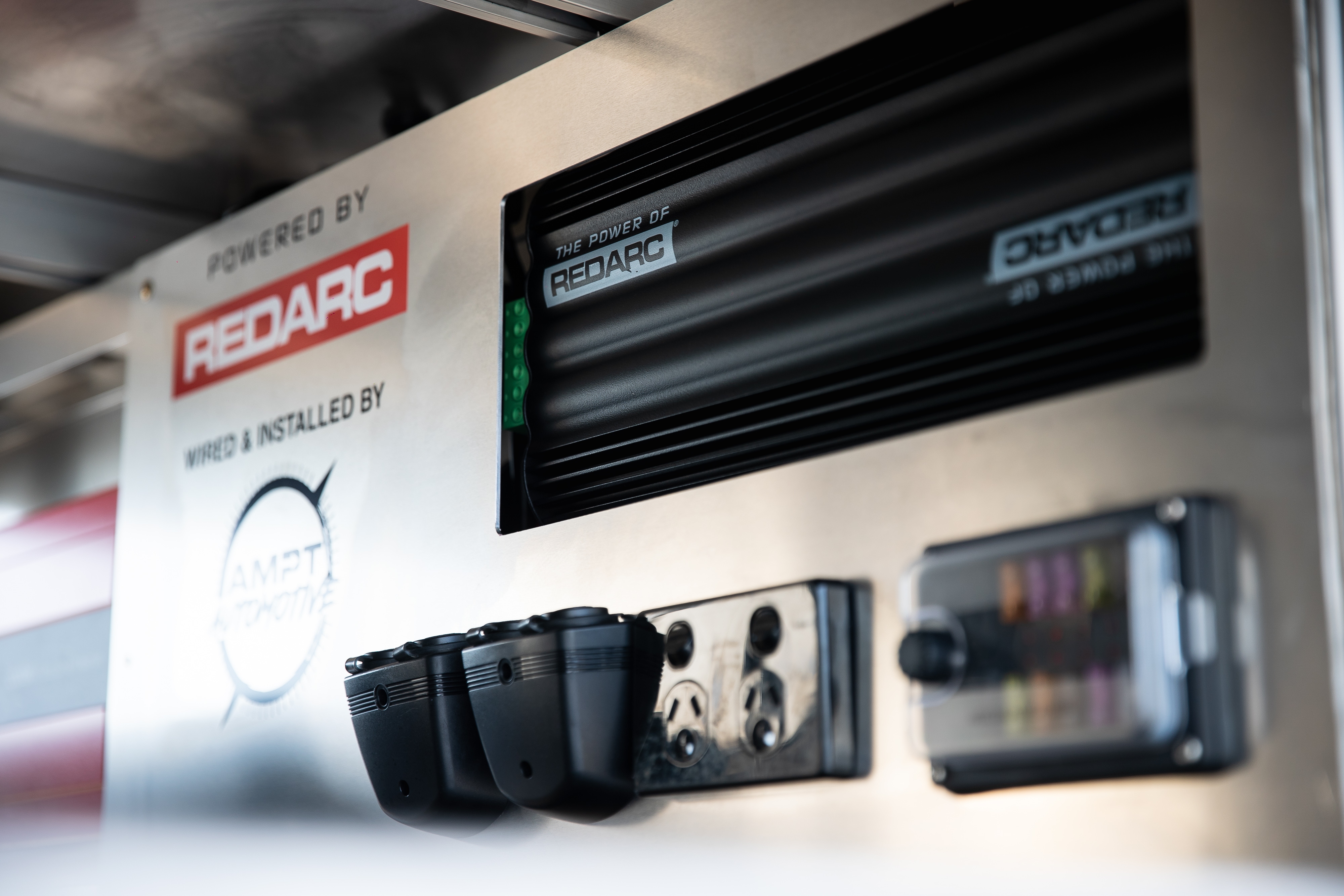

Charging options
Ute purchased, check. Auxiliary battery installed, check. The next step is to install a suitable dual battery charging system. That’s where REDARC comes into play, with over to 40 years’ experience in the design and manufacture of electrical products for 4x4s we offer a range of solutions perfect for charging auxiliary battery systems in dual cab utes.
Smart Battery Isolators
The trusty Smart Battery Isolator (SBI) is the most simple and time-tested approach to using your vehicle’s alternator to charge the second battery whilst the vehicle is running. Its job is to also protect the start battery from going flat by isolating it from the secondary battery when the engine is turned off.
A battery isolator will recognise when the vehicles engine is running, and charge is going to the starting battery via the vehicle’s alternator. It will do this by sensing battery voltage and when the start battery reaches 13.2 volts (on a 12-volt system), it will connect and start charging the secondary battery.
An SBI is best suited for vehicles that have a fixed voltage alternator and are on a budget. If an SBI is not able to help you achieve your power needs due to long cable runs or smart alternator technology, then the next option is an in-vehicle battery charger, also known as a DC to DC battery charger.
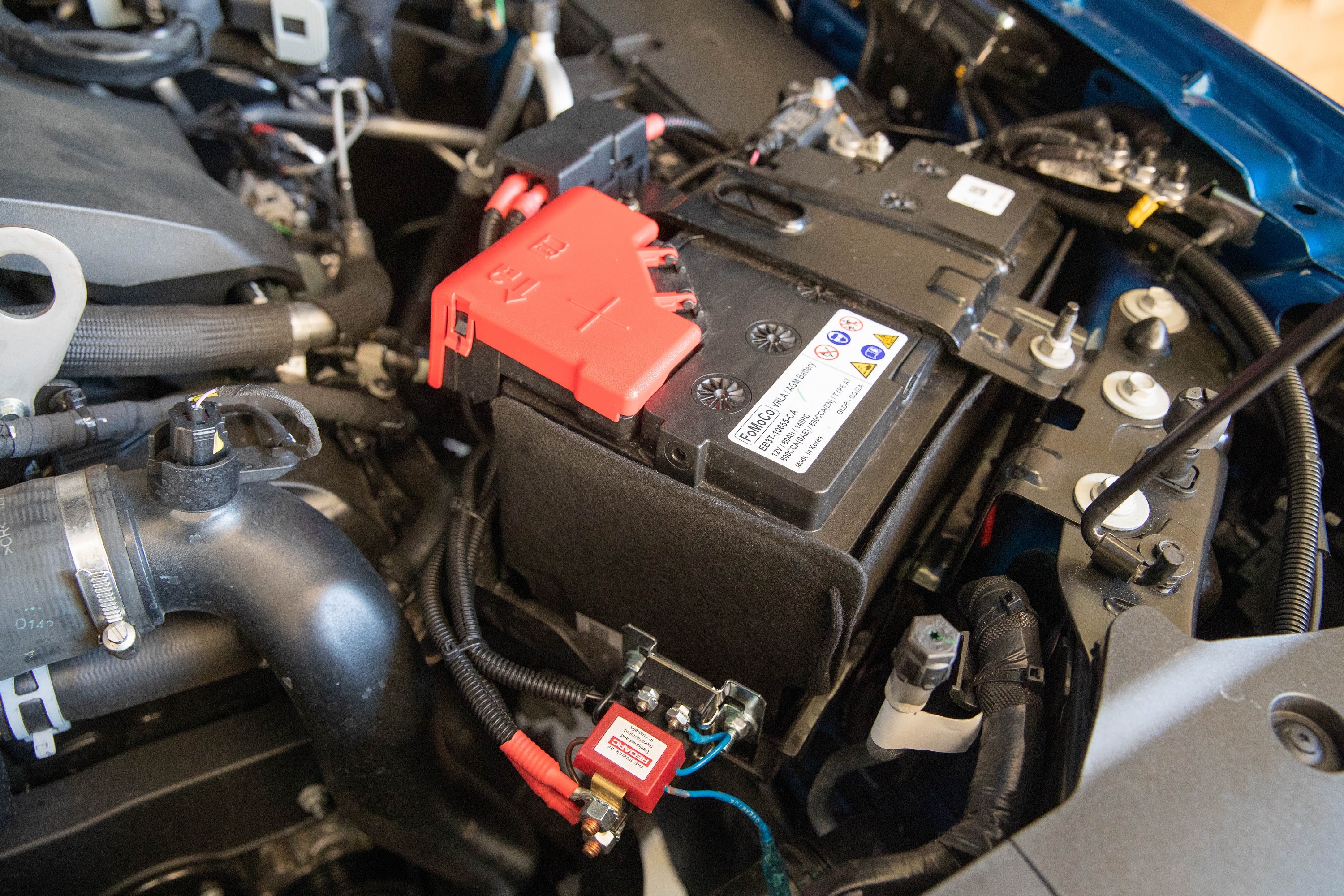

DC to DC Battery Chargers
The next step up from an isolator is a DC-DC Charger, which can best be described as a battery charger you have at your home, that plugs into the vehicles wiring instead of a wall. A DC-DC charger protects the start battery like an isolator does but when charging, it actually boosts the charge to the auxiliary battery.
There are many different types of dual battery chargers on the market and there are several factors which will dictate which one is best for your dual cab ute. This includes the type of battery you have, the type of alternator your ute has, the location of the install, and power you require. Features do also vary, such as the ability to accept additional power sources like solar.
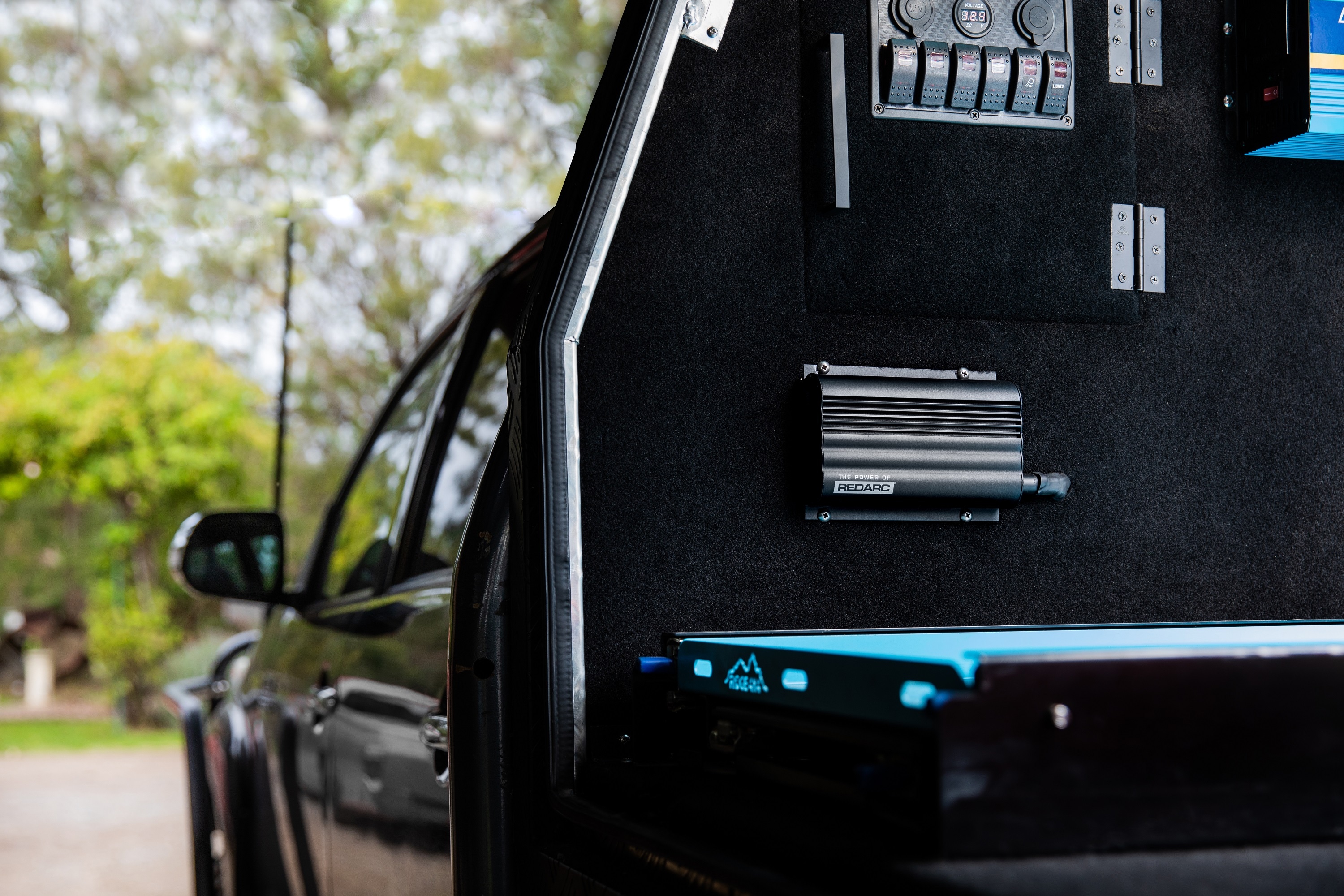

REDARC’s range of DC-DC in-vehicle battery chargers are available in 20, 25, or 40 Amp output for charging 12-volt auxiliary batteries and a 20 Amp output for charging a 24-volt auxiliary battery. The 12-volt, 25 and 40 Amp models and the 24-volt 20 Amp models also feature a fully integrated MPPT Solar regulator, allowing the maximum amount of power from solar panels to charge the auxiliary battery.
The range features a wide 9 – 32-volt input range allowing an auxiliary battery to be charged from either a 12 or 24V vehicle electrical system.
Battery Management System
If you really want to take your dual battery setup to the next level, then you should look no further than a battery management system. A good battery management system will have all the bells and whistles of an isolator and DC to DC charger and more.
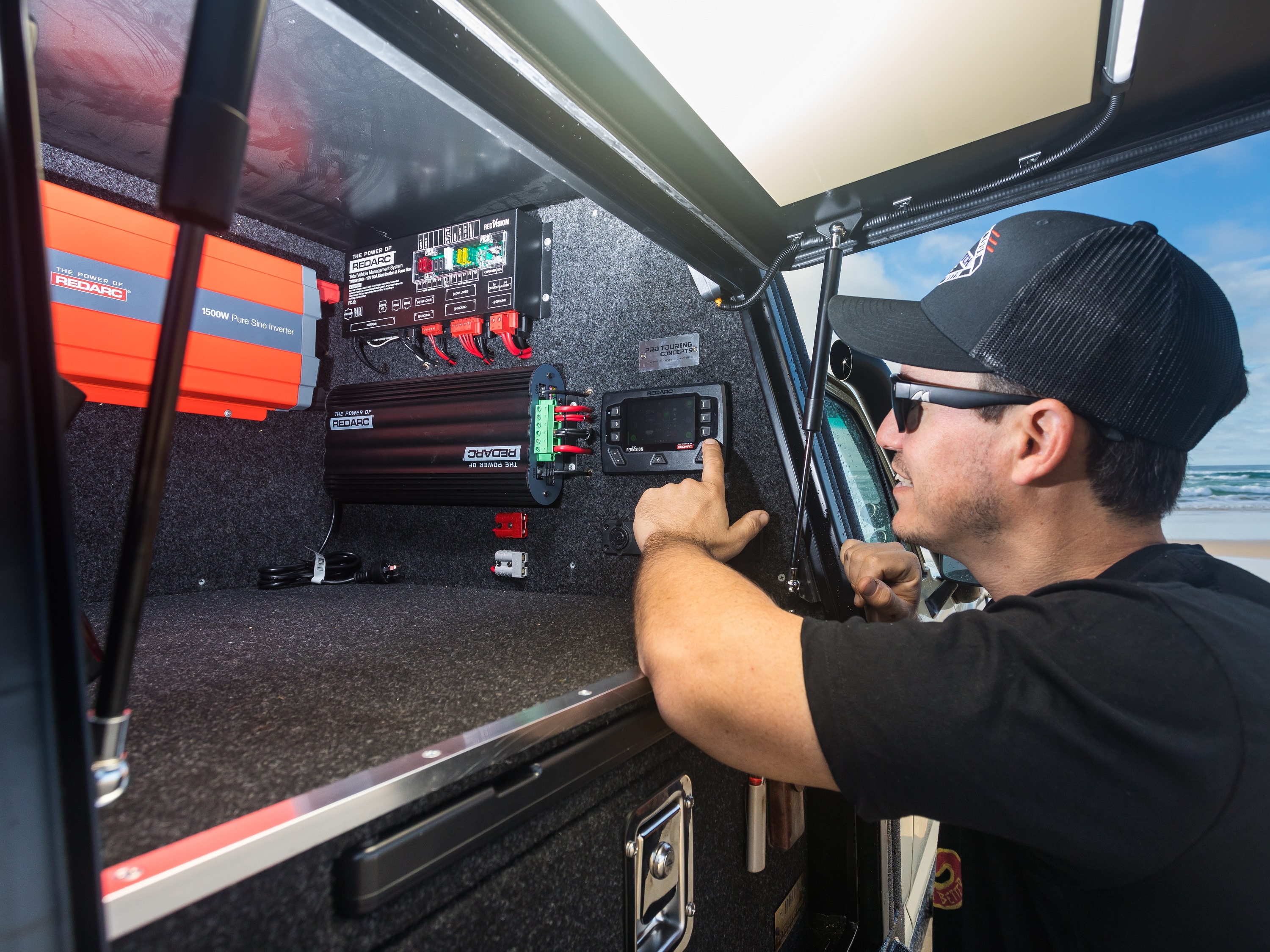

Managing multiple gadgets can be daunting especially if you are heading off the grid to remote destinations. With a battery management system, you can have the peace of mind in knowing that your system will take care of itself.
REDARC’s range of Manager30 Battery Management Systems are the perfect solution for those wanting a simple, informative, and self-sufficient system. It operates like six separate products in one: an In-Vehicle battery charger whilst on the move, a 240-volt charger, a solar regulator, a battery isolator, a remote battery monitor, and a load-disconnect controller. With these features, it means you can relax and stay off the grid as long as your heart desires.
Determine your needs
So, there it is, REDARC’s ultimate guide to dual battery charging in dual cab utes. If you are considering a charging system for your rig but are still unsure of what the best solution is, we have the solution.
The best dual cab ute solution for you ultimately depends on a range of factors and variables relating to your needs. We recommend the use of our online dual battery selector tool which considers all the variables relating to your vehicle such as the alternator type, your battery type, and usage information. Whether you drive a Toyota Hilux, Ford Ranger or any other common 4x4 ute we will be able to give you a recommendation tailored to your needs.
